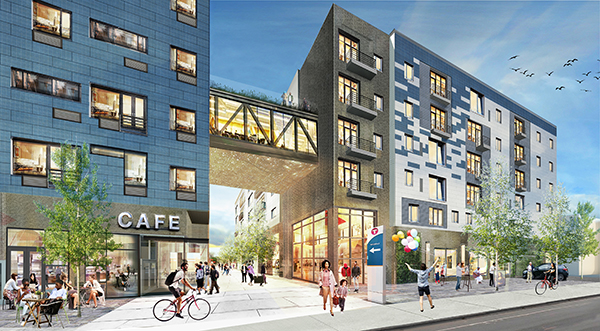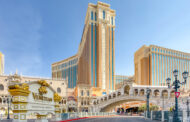By Todd Phillips, Minnesota Real Estate Journal
Demolition work has begun on Chris Velasco’s St. Louis Park project at the Intersection of Hwy. 100 and Hwy. 7.
Chris Velasco’s Bold Vision
St. Louis Park is understandably excited, PLACE’s development checks all the boxes; affordability, transit-oriented, sustainable, live-work, concealed parking, not to mention an urban forest. But Executive Director Chris Velasco doesn’t just talk the talk and throw around buzzwords to get through entitlements. Their vision is bold and ambitious: A 360-degree approach to community building that makes a difference by addressing energy, food, mobility, affordable access to art and culture, and in some states even health insurance. Essentially, the team has found a way to really combine sustainability with affordability. Not just to live in their silo’s side-by-side, but rather entangling their benefits so that one helps the other in a symbiotic relationship. For example, by incorporating renewable energy sources such as an anaerobic digester, wind turbines and solar panels, the project is designed to create more affordable energy for its residents and businesses. Another example is incorporating a hotel in the site, not only potentially giving jobs to residents, but also eliminating the costs of commuting, both financial and environmental.
A Model for TOD
“We are raising the bar on transit-oriented development”, says Velasco. “In the past, developers have plopped down apartment buildings next to light rail and simply called it Transit-Oriented. We are challenging that, incorporating the largest regional bike trail in the country by adding a multitude of bike amenities, such as repair and storage into our development.” And that’s not all, the project incorporates space for local retail and micro-business as well as live/work space for creatives. Add in the hotel and urban forest and you have one of the most intensely transit-oriented developments in the country.
A Model for Public Private Partnerships
The streets of the commercial real estate industry are lined with the broken dreams of ambitious developers. An industry that is increasingly dominated by large firms with deep pockets, development is no longer the place for under-funded, up and coming developers, let alone a non-profit like PLACE. But that hasn’t swayed Velasco and his team, they are breaking the mold and bringing creative solutions to the process.
PLACE claims grants from five separate sources including perhaps the largest grant ever funded by the Met Council. However, grants are just part of the story. PLACE’s website boasts eleven additional project partners, one of which is national behemoth Stantec. “We love the project,” says Steve Alm, Senior Principal at Stantec. “We’re thrilled to be able to leverage our deep bench of design and engineering experts from across the country, the best in their fields, to support PLACE’s vision for affordable living. The opportunity to partner with our other IPD team members, including Stahl Construction and the rest of the build team, is just icing on the cake.” According to Velasco, they have found working with partners instead of vendors brings a different perspective out of the work. “They are invested in the project, financially and emotionally and it shows up in the execution.”
A Model for Sustainability
The project started as a proof-of-concept for PLACE’s e-generation process. They were to occupy the old McGarvey Building and had approached the city of St. Louis Park for changes in zoning. But the project evolved as the city and state had plans that would coalesce with Velasco’s vision over time. E-generation is still a major component to the project. The company describes it as “a neighborhood-scale system that, quite simply, takes food waste from a community (think: food scraps) and turns it into energy, which then grows organic produce for distribution via CSA (community supported agriculture). As a result, the people and businesses in this community will have lower energy bills, and will have access to fresh, organic produce — even in the long, cold Minnesota winters.”
A Model for Persistence and Flexibility
Velasco and his team has endured several major changes to its site proposal. At first, it was to merely redevelop the McGarvey Building, which turned into a full-scale development. After light rail plans got in the way, the project was split into two components flanking the new light rail line. The project has been discussed at no less than 21 different city council, planning and EDA meetings; not to mention the dozens of public and private stakeholders now entangled in the project. Four years from the first Council session, demolition is nearing completion, with environmental remediation only steps away. Financing is lined up and the project should break ground in 2018.
Will this be a model for development in other markets, other cities? Velasco and his team thinks so. They are in the planning stages for other sites across the country, bringing sustainability and affordability together in a novel approach to community building.


